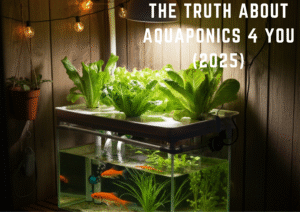
 The red-footed tortoise, with its vibrant red markings and gentle demeanor, has captured the hearts of reptile enthusiasts for years. But before you bring this charismatic creature home, it’s crucial to understand their needs. This guide delves into everything you need to know about red-footed tortoises, from their fascinating rainforest origins to creating a thriving habitat in your home.
The red-footed tortoise, with its vibrant red markings and gentle demeanor, has captured the hearts of reptile enthusiasts for years. But before you bring this charismatic creature home, it’s crucial to understand their needs. This guide delves into everything you need to know about red-footed tortoises, from their fascinating rainforest origins to creating a thriving habitat in your home.
Rainforest Royalty: Unveiling the Red-Footed Tortoise
Native to the lush rainforests of South America, the red-footed tortoise (Chelonoidis carbonaria) is a captivating reptile species. Named for the striking red coloration on their forelegs and heads, these tortoises boast a beautiful brown or black carapace (upper shell) and a lighter plastron (underside).
A Lifelong Commitment: Considering Their Longevity
Red-footed tortoises are true reptilian ambassadors of longevity. With proper care, these incredible creatures can live for well over 50 years, some even exceeding 100! This extraordinary lifespan necessitates a long-term commitment from potential owners.
Are You the Perfect Rainforest Guardian? Considering Your Lifestyle
Red-footed tortoises are relatively low-maintenance pets compared to other exotic species. However, their needs should be considered. They require a spacious enclosure that mimics their natural rainforest habitat, proper diet, and regular veterinary care.
Here’s a quick self-assessment to see if your lifestyle aligns with a red-footed tortoise’s needs:
- Do you have the space and resources for a large enclosure? Adult red-footed tortoises can reach up to 14 inches in length and require a spacious environment.
- Have you been committed to providing consistent care for decades? These tortoises are a lifelong responsibility.
- Can you dedicate time to daily care and cleaning? Their enclosure needs regular maintenance, and their diet requires preparation.
If you answered yes to these questions, then you might be the perfect guardian for a red-footed tortoise!
Building a Rainforest Paradise: Creating the Ideal Habitat
Red-footed tortoises thrive in warm, humid environments. Here’s how to create a rainforest haven in your home:
- Enclosure Size: Opt for a spacious enclosure, ideally at least 3 feet x 6 feet for an adult tortoise. More significant is always better!
- Substrate: Mimic the rainforest floor with a mixture of coco fiber, cypress mulch, and sphagnum moss. Ensure it’s deep enough for burrowing.
- Temperature and Lighting: Maintain a warm gradient within the enclosure, with a basking spot reaching 90-95°F (32-35°C). Provide UVB lighting essential for vitamin D3 synthesis.
- Humidity: To replicate the rainforest’s humidity levels, mist the enclosure daily and use a humidity monitor to maintain a range of 70-80%.
A Feast Fit for a Rainforest Friend: Dietary Do’s and Don’ts
Red-footed tortoises are primarily herbivores. Their diet should consist of a variety of leafy greens, vegetables, and fruits. Here are some key points to remember:
- Variety is Key: Offer a diverse selection of vegetables, such as dandelion greens, romaine lettuce, collard greens, and chopped carrots.
- Fruits in Moderation: Fruits are a treat, not a staple. Limit them to 10% of their diet and opt for low-sugar options like berries.
- Calcium Power: Provide a calcium supplement to ensure healthy shell development.
Beyond the Basics: Enrichment and Care Tips
- Stimulate Their Minds: Offer enrichment activities like hiding food or placing safe objects for them to explore within their enclosure.
- Schedule Regular Vet Checkups: Annual veterinary checkups are crucial to monitor their health and ensure they are thriving.
- Beware of Overhandling: Red-footed tortoises are not social creatures. Limit handling to minimize stress.
Frequently Asked Questions (FAQs):
Q: Are red-footed tortoises good pets for beginners?
A: While generally low-maintenance compared to other reptiles, red-footed tortoises still require a significant commitment. Their long lifespan, specific habitat needs, and dietary requirements make them more suitable for experienced pet owners.
Q: How much does it cost to care for a red-footed tortoise?
A: The cost varies depending on enclosure size, food choices, and veterinary care. Here’s a breakdown of potential expenses:
- Initial Setup: The enclosure, substrate, lighting, heating elements, and initial food supply can cost from $500 to $1000 or more.
- Ongoing Costs: Food, substrate changes, and vet visits can cost around $100-$200 per year.
Remember, these are just estimates. The actual cost may be higher or lower depending on your location and choices.
Q: Can red-footed tortoises live outdoors?
A: In some climates with warm temperatures year-round, outdoor enclosures can be suitable. However, most regions require them to be kept indoors to maintain proper temperature and humidity. Here are some critical considerations for outdoor enclosures:
- Climate: Temperatures should ideally stay between 75-90°F (24-32°C) year-round with adequate humidity. If your region experiences significant temperature drops, an indoor enclosure is necessary.
- Predators: Ensure the outdoor enclosure is predator-proof to protect your tortoise from animals like raccoons, dogs, or foxes.
- Escape Prevention: The enclosure needs to be secure to prevent escapes. Red-footed tortoises are surprisingly good burrowers and climbers.
Q: Where can I buy a red-footed tortoise?
A: It’s crucial to purchase a red-footed tortoise from a reputable breeder or rescue organization. Avoid pet stores, as their breeding practices and animal care may be questionable. Here are some resources for finding responsible breeders or rescues:
- Turtle and Tortoise Society: https://www.tortoise.org/
- Reptile Magazine Breeder Directory: https://reptilesbymack.com/reptiles-magazine-in-breeders-we-trust/
Q: Are red-footed tortoises endangered?
A: While not currently listed as endangered, the red-footed tortoise is classified as “Vulnerable” by the IUCN Red List. Habitat loss and illegal pet trade are major threats. When considering bringing a red-footed tortoise home, ensure you’re purchasing from a responsible source that prioritizes ethical breeding practices and conservation efforts.
Q: Can red-footed tortoises hibernate?
A: Red-footed tortoises do not truly hibernate, but they may brumate during cooler months. Bromination involves a period of reduced activity and metabolism. If you notice your tortoise becoming less active and eating less during cooler months, consult your veterinarian to ensure it’s a normal brumation cycle and not a health concern.
By understanding these factors and providing proper care, you can ensure your red-footed tortoise thrives in its new rainforest paradise within your home. Remember, bringing a red-footed tortoise into your life is a long-term commitment. Responsible ownership means providing them with the environment, diet, and care they need to live a healthy and fulfilling life.
Table of Contents
SEARCH HERE
CATEGORIES
RECENT POSTS



Advanced Mitochondrial Formula 2025: Can It Truly Recharge Your Energy Levels?

The Truth About Aquaponics 4 You (2025): Does It Actually Work?




Hepato Burn Supplement Review: What You Need to Know Before Buying



“The Ultimate Guide to Papillex: Natural Immune Support for HPV Relief”



Slim Down Naturally: The Truth About Plant-Based Fat Burner That Actually Work

TedsWoodworking Review 2025: Is It Worth It for Your DIY Projects?




“Immunotherapy vs. Chemotherapy: A New Era in Cancer Treatment”





“The Ultimate Guide to Hyperpigmentation Laser Treatment in 2025”


Is UV 7 Good for Tanning? What You Need to Know Before You Glow


Planning a Trip from New Windsor to Grand Canyon? Here’s What to Know


“Your Guide to the Closest Airports to Yosemite National Park”

“How to Create the Perfect Gluten-Free Chicken Soup for Cold Days”



“The Secret to Authentic Creole Sauce: Step-by-Step Recipe”


“Natural Weight Management Made Easy: Exploring Nagano Tonic”


Can Rosemary Oil Reverse Male Pattern Baldness? The Truth Revealed



ProvaDent Reviews & Complaints: Is This Supplement the Real Deal for Oral Health?

“Everything You Need to Know Before Buying the Clawsable Heated Cat House”

“Are Ryan’s Shed Plans Worth It? A Practical Guide for DIYers”


“Miracle Massage Wand and More: Exploring the Ageless Knees Method”

BV No More by Jennifer O’Brien: A Simple, Natural Approach to Tackling Bacterial Vaginosis (BV)

Unlock Your Dog’s Full Potential: A Complete Review of Brain Training for Dogs
